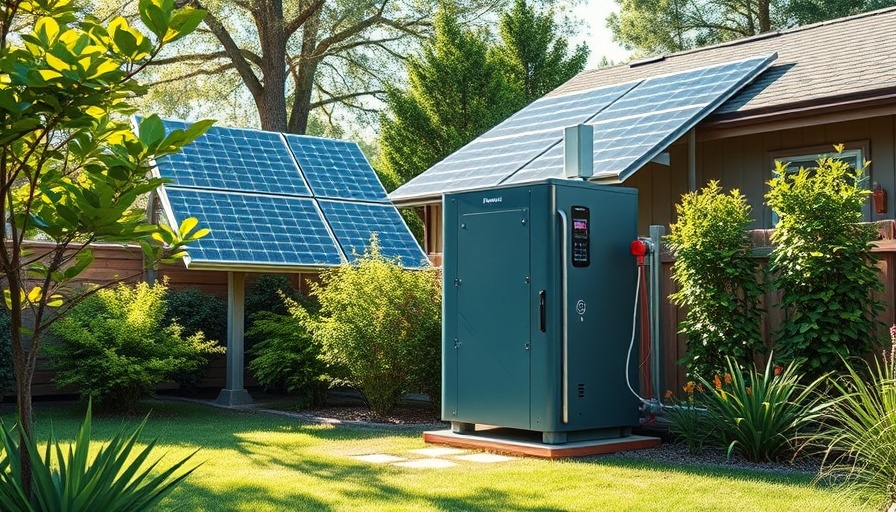
Energy Storage: A Growing Trend
As energy prices fluctuate and sustainability takes center stage, homeowners are increasingly considering solar panels and battery storage systems to enhance their energy independence. Recent data shows a remarkable surge in battery adoption, with a record 45% of solar installations in the second half of 2024 including battery systems. This reflects an evolving market where not just solar energy, but its pairing with batteries is becoming a standard practice for many homeowners.
The Financial Factors Driving Battery Interest
According to EnergySage’s Spring 2025 Solar and Storage Marketplace Report, financial benefits remain a primary driver for consumers, with 33% of potential customers motivated primarily by savings on their energy bills. As battery prices hit an all-time low of $999 per kilowatt-hour—down from $1,333 just two years prior—the appeal is clear. The interplay between state policies, such as net metering rates, greatly impacts the economic value of battery installations, leading to varied consumer interest across regions.
The Regionality of Battery Demand
Notably, interest in batteries differs significantly depending on geographical location and local policies. For instance, in states with retail-rate net metering programs, the incentive to invest in battery storage diminishes as these states essentially provide a virtual battery via the grid. In stark contrast, states like Hawaii, Tennessee, and California have seen considerable battery adoption due to their low compensation rates for exported energy, encouraging consumers to seek self-supply and backup power options.
Navigating Consumer Concerns
Solar installers are adapting their sales strategies based on these diverse regional interests. For example, in Idaho, where full retail credit is provided for solar exports, customers are more inclined to view batteries in terms of resilience against outages. This highlights a unique perspective where preparedness outweighs the financial benefits, particularly among demographics with a military background, who prioritize energy independence and reliability.
The Implication of Changing Utility Policies
The recent trend of utilities pulling back on net metering compensation policies, as seen in California's NEM 3.0 switch, drastically influenced the market. Battery attachment rates soared from just 7% to 79%, showcasing how policy shifts can ignite consumer interest. As utility companies continue to revise these frameworks, a growing number of states are likely to experience heightened demand for batteries.
What the Future Holds for Energy Storage
Looking ahead, the momentum towards energy storage is poised to grow. As technology advances and prices continue to drop, more homeowners and businesses will consider integrating batteries into their energy solutions. The knowledge that battery systems can not only complement solar installations but also serve as a safeguard against energy instability will play an essential role in future buying decisions.
Take Action: Embrace Energy Storage Solutions
For homeowners aged 30-65 or eco-conscious consumers, incorporating battery storage into your energy strategy provides a dual advantage of cost savings and enhanced sustainability. With the market evolving, staying informed about local energy policies and advancements in battery technologies is crucial for making educated investing decisions. Start exploring options available to you today and take the first step towards an energy-efficient future.
 Add Row
Add Row  Add
Add 



Write A Comment